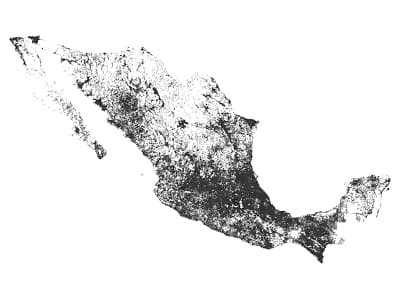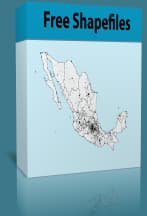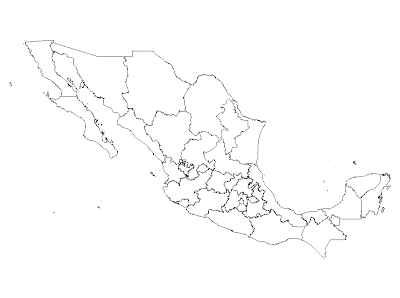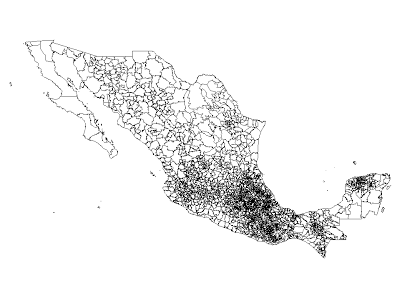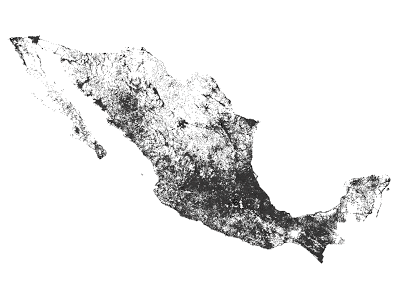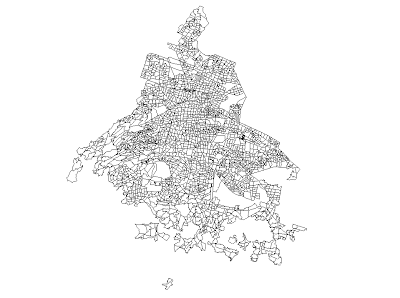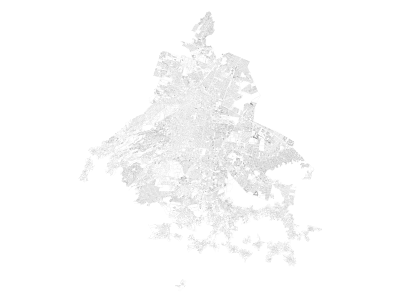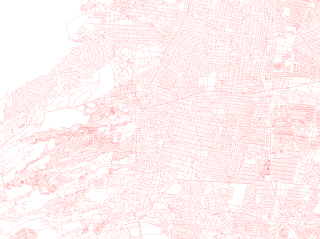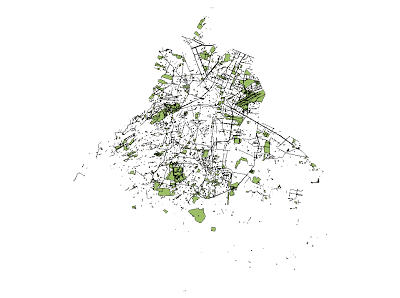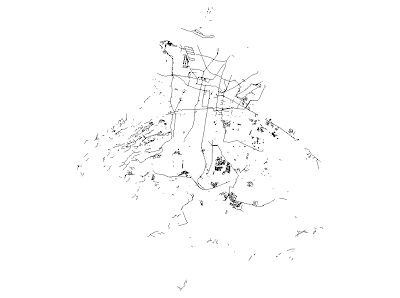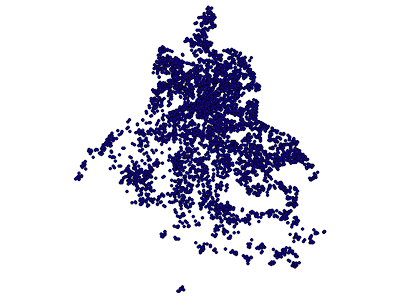The shapefiles are encoded as codepage 1252 and were reprojected to WGS84. All data corresponds to the 2010 census.
The shapefiles are encoded as codepage 1252 and were reprojected to WGS84. All data corresponds to the 2010 census.
Now for the ugly bits: You’ll need a recent version of innoextract, one that can work with files created by version 5.5 of Inno Setup (yes, the INEGI distributes shapefiles as windows installers), the one in Ubuntu universe is not recent enough. The version available from this repository should work.
1 2 3 4 | sudo add-apt-repository ppa:arx/release
sudo apt-get update
sudo apt-get install innoextract
chmod +x download-census-shp.sh
|
As of now, this script has not been tested on Windows and Mac systems, only on Ubuntu. This script has been tested on Ubuntu, on a Mac you should try and use ‘brew install wget’ and ‘brew install rename’ before running it, and on Windows use cygwin.
The script will create a directory called shps where all the shapefiles are located, if something goes wrong when downloading be sure to delete it and try again. Once you finish running the script you’ll end up with about 5.5 gigabytes of shapefiles containing all available levels of geographical granularity for the 2010 Mexican census.
Census Geographies:
States -> Municipios (Counties) -> Localidades (Polygon if urban otherwise point) -> AGEB (Census Areas - Urban only) -> Manzana (Census Blocks - Urban only)
Plus, you’ll also get a bunch of shapefiles of parks, rivers, schools, etc.
Municipios (Counties)
Localidades (Urban Polygons and Rural Points)
AGEB (Census Areas)
Manzanas (Blocks)
Ejes viales (Streets)
Servicios A (polygons and lines)
Camellón, Metro Station, Hospitals, Parks, Schools, etc
Servicios L (polygons and points)
Bridges, Railways, Tren Metropolitano, Lindero, etc
Servicios P (points)
Churches, Schools, Hospitals, etc
Here’s the script you need to run to download the shapefiles:
| #!/bin/bash | |
| # Author: Diego Valle-Jones | |
| # Web: http://www.diegovalle.net | |
| # Purpose: Download shapefiles of manzanas (blocks), agebs (census areas), ejes | |
| # viales (streets), interesting areas and a whole bunch of other stuff | |
| # Note that you'll need a recent version of innoextract | |
| # http://constexpr.org/innoextract/, one that can work with files | |
| # created by version 5.5 of Inno Setup, the one in Ubuntu universe is | |
| # not recent enough. The version available at | |
| # https://launchpad.net/~arx/+archive/release is good enough. | |
| # sudo add-apt-repository ppa:arx/release | |
| # sudo apt-get update | |
| # sudo apt-get install innoextract | |
| # chmod +x download-census-shp.sh | |
| # As of now, this script has not been tested on Windows and Mac | |
| # systems, only on Ubuntu. The script will create a directory | |
| # called 'shps' where all the shapefiles are located, if something | |
| # goes wrong when dowloading be sure to delete it and try again | |
| set -e | |
| # Projection compatible with Google Maps | |
| PROJECTION="+proj=longlat +ellps=WGS84 +no_defs +towgs84=0,0,0" | |
| # wget command | |
| CURL="curl -fsS --retry 3 " | |
| # The list of shapefiles of manzanas, agebs, etc | |
| declare -a files=("ageb_urb" "eje_vial" "estatal" "loc_rur" "loc_urb" | |
| "manzanas" "municipal" "servicios_a" "servicios_l" "servicios_p") | |
| # List of files for the national (not state level) data | |
| declare -a national_files=("estatal" "loc_urb" "nacional" "loc_rur" "municipal" "zonas_metro") | |
| # State abbreviations | |
| declare -a states=("national" "ags" "bc" "bcs" "camp" "coah" "col" "chis" "chih" | |
| "df" "dgo" "gto" "gro" "hgo" "jal" "mex" "mich" "mor" "nay" "nl" "oax" | |
| "pue" "qro" "qroo" "slp" "sin" "son" "tab" "tamps" "tlax" "ver" "yuc" | |
| "zac"); | |
| # Use gdal to reproject, and then rename the shapefiles to include | |
| # a user friendly abbreviation instead of a number | |
| # First argument: directory of shapefiles shps/state_abbreviation | |
| # Second argument: the state abbreviation | |
| # TODO: convert the encoding from windows-1252 to utf-8 | |
| function reproject { | |
| name="$3[@]" | |
| arr=("${!name}") | |
| for i in "${arr[@]}" | |
| do | |
| ogr2ogr "$1/$2_$i.shp" "$1"/$i.shp -t_srs "$PROJECTION" | |
| rm "$1"/$i* | |
| done | |
| # rename the extra census data that comes with the shapefiles | |
| cd "$1/tablas" | |
| rename "s/^cpv2010/$2_cpv2010/" cpv2010* | |
| rm -rf cpv2010* | |
| cd ../../.. | |
| } | |
| # For each of the 32 states (and national data == 00) download and reproject | |
| for i in $(seq 0 32); | |
| do | |
| # The INEGI uses a leading zero for all one digit numbers | |
| if [ "$i" -lt 10 ] | |
| then | |
| FILENUM="0$i" | |
| else | |
| FILENUM="$i" | |
| fi | |
| # download the files from the inegi server. 'idusr' is the id you get | |
| # when you register at the INEGI (yes, I'm 12 years old) | |
| $CURL "http://www.inegi.org.mx/est/scince/scince2010.aspx?_file=/est/scince/scince2010/Scince2010_$FILENUM.exe&idusr=80085" -o ${states[$i]}_scince.exe | |
| # Extract the shapefiles from the inno setup installer windows | |
| # executable (note that it doesn't allow you to specify the | |
| # directory to extract the files) | |
| innoextract --lowercase --silent ${states[$i]}_scince.exe | |
| # Create a directory called "shps" to store the shapefiles | |
| mkdir -p shps/${states[$i]} | |
| # Copy the shapefiles to the new directory | |
| cp -r app/"$FILENUM"/* shps/${states[$i]} | |
| # Delete the temp files from innoextract | |
| rm -rf app | |
| rm -rf tmp | |
| rm -rf ${states[$i]}_scince.exe | |
| # call the reproject function above | |
| if [ "$i" -eq 0 ] | |
| then | |
| reproject shps/${states[$i]} ${states[$i]} national_files | |
| else | |
| reproject shps/${states[$i]} ${states[$i]} files | |
| fi | |
| # give the server a rest before downloading the next file | |
| sleep 20 | |
| done | |
| # You could use the code below to merge all the states into one giant | |
| # shapefile of Mexico. Change '_manzanas' to '_agebs' or '_eje_vial' or whatever | |
| #for file in $(find shps -maxdepth 2 -name "*_manzanas.shp" ) | |
| #do | |
| # ogr2ogr -update -append mexico_manzanas.shp $file -f "esri shapefile" -nln merge | |
| #done | |
| # Filter attributes (e.g. only include total population in the dbf) | |
| #ogr2ogr -select POB1 mexico_manazanas.shp merge.shp |
P.S. You can contact the INEGI and tell them what you think of the way they distribute data.
P.P.S. If you need shapefiles of elevation curves, archeological sites, rivers, etc, try this other script
Update: You can also use a docker image to run the script without having to install anything
1 2 3 4 5 6 | docker pull diegovalle/scince2010-docker
# shared directory to store the output
mkdir /tmp/scince2010
# run ./download.sh within the container and the files should be ready
# in /tmp/since2010
docker run -v /tmp/scince2010:/shapefiles/shps -i -t diegovalle/scince2010-docker
|
